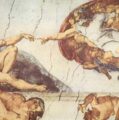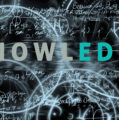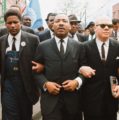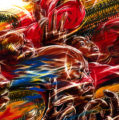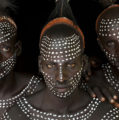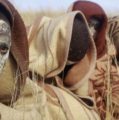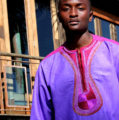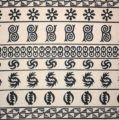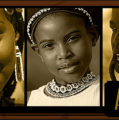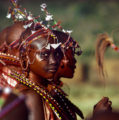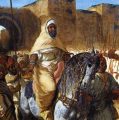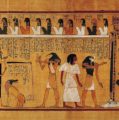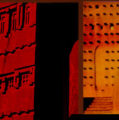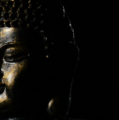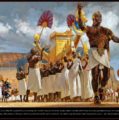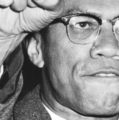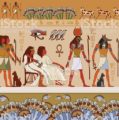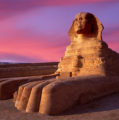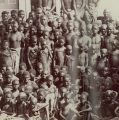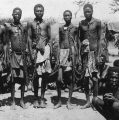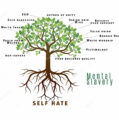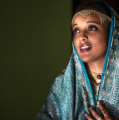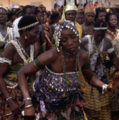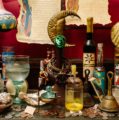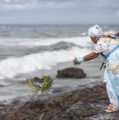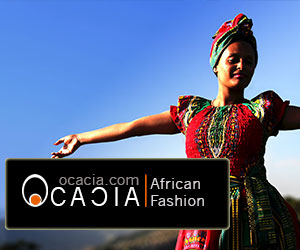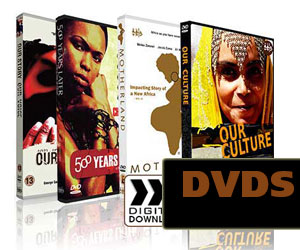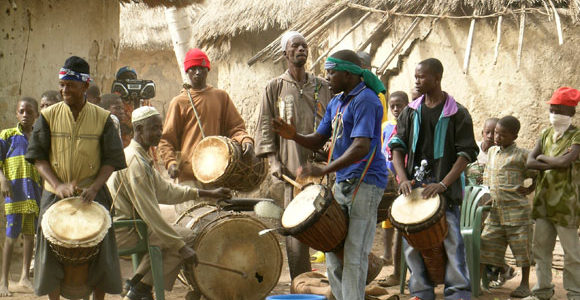
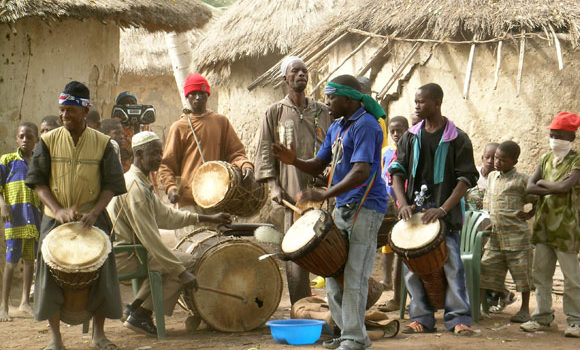

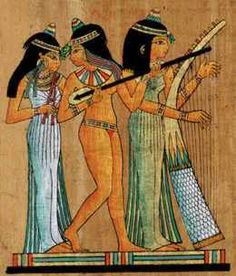
Ancient African Music
In the case of some African religions afterlife is not perceived as being something different from this one. Instead, the visible world in which we live is combined with the world belonging to the spirits and the ancestors who have a considerable degree of influence on the fortune and fate of people in this world.
The success and good fortune of this life revolves around maintaining a good relationship and good communication with the spirit world. Thus in the face of misfortune, ceremonies and rituals are held in order to communicate with the spirit world to find out the cause of the affliction and to appease the spirit(s) in question. The common means by which this ‘communion’ with the spirit world is achieved is through trance and possession – two of the major factors in African religious practice.
Music and dance provide a means by which trance and possession can be attained within religious ritual. The essay shall therefore firstly address the ways in which music and then dance are related to trance and possession, and later look at the social and cultural aspects of music and dance.
Although I have separated aspects of music and dance in the descriptive process, it is important to note that while these two forms can be separated to some extent in theory, they are in fact interrelated in practice. In the west, there is more of a conceptual divide between music and dance, where dance is often interpreted as being aesthetic movement, and therefore an image. However in Africa they function together in such a way that it may be hard to draw a line between the two. Dance is really a visual expression of sound and consequently innately tied with music.
“… dancing gives the rhythms a visible and physical form. ”
For this reason, in the latter part of the essay I discuss music and dance synonymously in relation to the social and cultural aspects of religious practice.
In some rituals, there is a direct link between music and possession. Music is believed to have the power to call on the spirit world and to send people into trance. In many healing or possession rituals, the success of the ritual revolves around the music and how well is played, thus affecting whether or not an individual will go into trance and become possessed. A ritual called bira is held among the Shona people of Zimbabwe to mark seasonal changes or misfortune, whose cause is attributed to an ancestral spirit who is calling attention to a personal or social problem, or who wishes to possess the person (as often in the case of illness). The music of the mbira is what both sends the medium into trance and calls upon the ancestor to come down and possess him or her. Its sound is believed to be a bridge between this world and the world of the spirits. “ The Mbira is not just an instrument to us…it is the way in which we pray to God”. Without the music of the mbira , possession could take place.
Similarly, The bushmen of the Kalahari in Southern Africa also depend on music provided by the women to send the men, who are healers, into trance so that they can then exercise their healing power. It is the music that is believed to ‘heat up’ the spirits, inviting them to come down and join the ritual.
Certain songs can be identified with certain spirits, the reason for this being that these were perhaps the songs that the spirit liked best when they were alive. This means that the music can call on a specific spirit to come and attend. In this way, music can call on the specific spirit whose presence is appropriate to the ritual being held. Also, if the identity of a spirit is unknown and must be revealed in order to identify the cause of misfortune, different songs can be played until the ‘right’ music is found that causes the spirit to come down and possess an individual and reveal its identity.
This occurs at bira rituals where it is the job of the musicians to exercise their knowledge of the mbira repertoire by playing through songs until they find the right song that belongs to the ancestor causing misfortune. The result is that this ancestor will come down and possess the individual and reveal its identity.
The Tumbuka of Northern Malawi in their vimbuza dance also have certain rhythms that are associated with certain spirits.
“…the master drum, ng’oma, began to sound the spirit-specific
rhythmic mode of the vimbuza spirits…”
The above show how music is powerfully evocative, inducing possession and calling on the spirits.
However, Rouget points out that although the majority of spirit possessions take place while music is being played, there is not a necessary link between music and trance. He states that “the effect of music is not as constrictive or as automatic as some people have sometimes wished to believe.” Music can be used to ‘calm’ possession or to terminate it, and at times does not have to be present at all.
1) He uses the West African Orisha cult to show how music calms possession. He distinguishes two states of consciousness throughout the period of reclusion during initiation – ‘santo state’ or ‘ere state’. The former is a state of wild possession when the Orisha is embodied. The latter describes a state of ‘dispossession’ when the Orisha has departed for the time being and the initiate is left in a childlike state. The santo state cannot be sustained for more than a few hours due to its energetic nature and music is used to induce the ere state, thus calming the possession.
2) WRITE! Griot saves girl’s life – tummy blowing up and her dying. The following shows how possession can occur without the aid of music and how music can be used to bring a person out of trance. In Chad , among the Mussey, a person is often in the bush when struck down by an unknown spirit. They remain unconscious on the ground until others come and blow into a gourd trumpet “until the right notes awaken her.” Indeed possession can be obtained through the use of drugs
3) Rouget also suggests that music effects some whilst not others during some religious practices, as only appropriate individuals become possessed. This suggests that the effectiveness of music varies. In some situations it “varies according to the status of the adept, who can be more or less vulnerable according to age, experience and position in the hierarchy of the cult.” Seniority and experience means greater control over the extent to which music causes them to react and can even be resisted it all together. In other situations it is said to vary according to ways in which it is experienced. During the annual feasts held for Shango amongst the Yoruba, possession by Shango, which is induced by chant, cannot occur in more than one person throughout the ceremony. As the feast travels from village to village, a different individual will become possessed by Shango in each one. The invocation chant thus effects no one other than the individual possessed by Shango. Rouget claims, therefore, that the effectiveness of music is governed by the convention. Similarly, Freidson asserts that although the music is the same, it causes varying results in the trance of the medium. This must mean that “… the change in the trance process must be within the healer’s experience of the music. ”
In reference to the Yoruba example, Rouget’s conclusion relies on whether or not one believes the individuals are actually being possessed by Shango. Rouget and Freidson’s assertions could be contrasted with the idea that the effectiveness of music also lies with the musician(s). Music is never played the same twice, therefore the same music can exert a different energy each time, creating differences in response. At bira , the musicians are responsible for keeping the spirit at the ceremony. If the intensity of their playing drops, the spirit could drift away shortly after its arrival, and if they do not play with the right energy, possession will not take place at all. In this case it is the music and musicians who govern the extent and length of possession, as well as the medium’s experience of the music.
The context it is used in…
We shall now touch on the question of what kind of music causes possession. It is not believed that any particular instrument, mode or rhythm can be specifically be associated with the inducement of possession, as musical styles and instruments vary so much from culture to culture. There are cases, however, where emphasis may be on either vocal or instrumental music. Amongst the Bushmen, music is primarily vocal, aside from the clapping and the sound from bells attached to the feet. However, there is no example of purely instrumental music used in religious practice.
DANCE
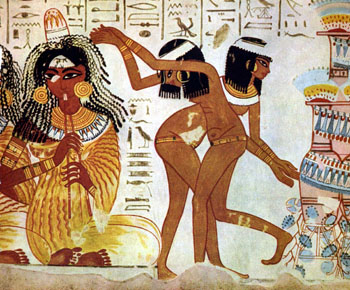
Dancing in Ancient Egypt
As I have said earlier, dance is no the same as how we may perceive it in the west. First how it facilitates possession, then how it can be music-making in itself, followed by the cultural values that are brought and sustained within religious practice by means of music and dance. The term dance in this context does not refer to a necessarily aesthetic form of movement. It can be any ranging from the wild movements of a person in a state of wild possession to the monotonous bobbing of the head whilst seated. What it refers to is the involvement in the music through movement.
In the context of religious practice dance seems inspired by music and not visa versa. It is in many ways an extension of the music through movement, and works alongside it to create the necessary conditions for possession and communication with the spirit world. Entering into dance, one is able to submit to the energy being generated by the music. For possession to occur, there must be an opening or clearing of ‘interior space’ in order to accommodate the spirit that wishes to take over the body. Trance is therefore a process of ‘letting go’ and opening oneself up, disengaging thought processes and letting the body be driven by the music.
“…I found myself doing the dance without really thinking
about it. My body just sort of took over and followed the rhythmic
motto…it was almost as if I were watching someone else dance. ”
Dance in itself does not seem to have the same power as music to call directly on the spirit world. Its role is to affect the human being, not the spirit, whereas the music does both. Dance is used to help put the body into a state of trance and enable the individual to ‘see’ the spirit world.
So how does dance induce an individual into a state of trance, or ‘letting go’? Dance seems to follow rhythm above all else in the ritual context. Cyclic rhythms have huge power in sending a person into an ‘other’ level of consciousness. Even an onlooker can become wrapped up in the hypnotic nature of repeated rhythms. A dancer is not only hearing these rhythms played, but also using it to drive their body to move with it, transforming sound which is heard into movement which is felt. It is almost as if the dancers are dancing the rhythm with their body, whereas the musicians are ‘dancing’ the rhythm with their fingers (mbira) or hands (drums and clapping). There is therefore a ‘double impact’ of these hypnotic rhythms on the body.
In some rituals, dancers have a number of idiophones attached usually to the arms, ankles, waist or skirt which gives sound to their movements whilst adding to the sounds already being created by instruments and voices. The body becomes a musical instrument. Freidson regards this as an essential aspect of ritual performances, and has been virtually ignored by ethnographers. The Bushmen use idiophones around their ankles and Rouget suggests that the primary function of these steps “is not to from choreographic figures but to produce sound”. This statement somewhat compromises an important features of ritual dance, which is its evocative power through rhythmic movement. Whether heard or not, the dance steps are importantly felt by the dancer and are expressing the rhythm through movement. Idiophones give sound to the rhythms that they are dancing, just as an instrument gives sound to the rhythm being produced by the musician’s hands. Berliner touches on this idea:
“… the fingers of the mbira players are themselves “dancing” on
the mbira keys in movements and variations not unlike the
movements of the dancers…”
Let us now address some of the social, political and cultural aspects that music and dance bring to religious ritual.
In societies where certain members are restricted or suppressed in one way or another, dance rituals often provide them with a means of expressing what can never be expressed in words. Amongst the Samburu of northern Kenya , the society is made up of three main ‘pier’ groups: Young, uncircumcised boys called ‘herdboys’; circumcised boys who are initiated into warriorhood called moran; older men who are married, called elders. Due to a peaceful society, the moran are no longer actual warriors. So despite the priviages of moranhood such as the close association with girls, their songs and their presentation, their role within society has become diminished. There is a sense that they are in limbo as they are more than boys, but not yet accepted as mature men, unable to marry, and not permitted full domestic responsibility. Ritual dance allows moran to express their frustrations with society freely and to meet rival clans and girls in peace, therefore challenging the boundaries society imposes on them.
Similarly, the Bori cult amongst the Hausa of Nigeria provides women with the opportunity to express their frustration with the restrictions imposed on them by men and society through dance. However, during the Bori dance, music and dance brings about the possession – a state in which the woman is believed to not be herself, but who is at one with the sprit. It is only then that they are permitted to “… defy not only the domestic authority of their menfolk but also their political authorities ”. These examples both show how dance in the context of religious practice create a forum in which the individual is excused from the normal constraints of society and allowed to challenge the way in which they are governed by their society.
Religious practice often entails the ‘coming together’ of a society to address a common cause – usually some sort of misfortune or the prevention of misfortune. It is important that tension and conflict is put aside during rituals, for everyone in this world is equally subject to the will of the gods. Religious practice therefore often reinforces an awareness of unity within society. Music and dance are key components within religious practice which manifest this sense of ‘unity.’ Rouget describes amongst the Bushmen that in singing, clapping and dancing they are united whatever their feelings may be towards one another.
“ Even if they hurl accusations at one another in the course
of the dance, the next moment, the people become a unit,
singing, clapping and moving together.”
Similarly, in bira ritual amongst the Shona a feeling of “solidarity emerges as villagers ritually unite with their ancestors through their common participation in the music of the bira.”
Music and dance also carry strong themes of cultural identity. The continuation of old songs within religious practice retains a connection with old ancestral spirits who are associated with these songs. At bira , experienced players well versed in the repertoire preserve the connection to old spirits by playing their songs. Once no longer played, these spirits will not be called upon during ritual and will consequently fade from people’s memories.
When music calls on an ancestor, it also calls on all the history surrounding that ancestor, thus history is preserved through music. Amongst the Tumbuka, Freidson recounted that by playing a specific rhythmic motto, he was not only calling on a particular spirit, he was “calling forth an entire historical field of action for the Tumbuka”, as this spirit represented the history of Ngoni warriors.
Old languages are also preserved in songs. Some languages are no longer even understood, except perhaps by a few elders, and so are preserved and ‘fosilized within the musical repertoire. Despite some songs no longer being understood, it seems that when it comes to playing music for the purposes of possession and healing, lyrical content is of little importance compared to the fact of singing, dancing, clapping and making music together. Perhaps one could say that lyrics are for this world, whereas the music is for the world of the spirits.
A problematic issue with music and dance is that they represent concepts and meanings which cannot necessarily be put into words. Expression through music and dance, and analytical expression serve as two distinct modes of communication. So the use of analysis alone to describe music and dance is in itself a distortion of a true understanding this mode of communication. As Spencer points out, “aspects of dance and musical communication cannot be translated into other modes without distortion. ” Analytical thought processes alone in no way do justice to the full function of music and dance within African religious practice. We can only hope to gain some insight into their function through words, after which they must be understood in their own context of performance through experience.
REFERENCES
J.M. Chernoff, African Rhythm and African Sensibility (Chicago & London: The University of Chicago Press, 1979), p.143.
P.F. Berliner, The Soul of the Mbira (The University of Chicago Press, 1978), p186
S. Freidson, Dancing Prophets. Musical experiences in Tumbuka Healing, (The University of Chicago Press, 1948), p.11
G. Rouget, A Theory of the Relation Between Music and Trance, (The University of Chicago Press, 1985), p.71
Ibid. p.66
G. Rouget, A Theory of the Relation Between Music and Trance, (The University of Chicago Press, 1985), p. 71
S. Freidson, Dancing Prophets. Musical experiences in Tumbuka Heaing, (————), p.29
S. Freidson, Dancing Prophets. Musical experiences in Tumbuka Heaing, (————), p.18
G. Rouget, A Theory of the Relation Between Music and Trance, (The University of Chicago Press, 1985), p.141
P.F. Berliner, The Soul of the Mbira (The University of Chicago Press, 1978), p194
M. Douglas & P.M Kaberry, Man in Africa (Tavistock Publication, 1969), p.289
G. Rouget, A Theory of the Relation Between Music and Trance, (The University of Chicago Press, 1985), p.146
P.F. Berliner, The Soul of the Mbira (The University of Chicago Press, 1978), p.205
S. Freidson, Dancing Prophets. Musical experiences in Tumbuka Heaing, (————), p.168
P.Spencer, Society and the Dance (Cambridge University Press, 1985), p.65

